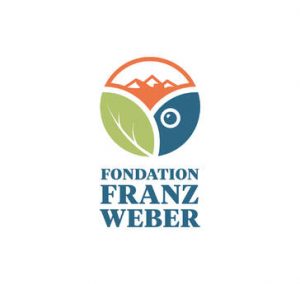By Rael Loon.
Introduction
Kirsten Conrad’s paper ‘Trade bans – a perfect storm for poaching’, (Tropical Conservation Science V5(3): 245-254) is indeed timely. While trade bans such as CITES have been successful in helping to stabilize populations of certain species, in the case of rhinos, such a ban is proving less effective. The paper identifies five ‘forces’ at play which in the context of a trade ban may in fact result in an increase rather than a decrease in illegal trade. These forces may combine to accelerate the demise of the species in question, rather than aiding its protection:
- Inelastic demand and high profit potential
- A long history of trade with strong cultural affiliation
- Ambiguous property rights
- Negative economic incentives due to human-animal conflict
- Inadequate enforcement
The author asks whether a legal regulated trade is a viable tactic to counter these forces? Unfortunately the answer is not conclusive, since as we know the rhino conservation conundrum is a highly complex one to solve. While most if not all citizens concerned for rhino safety are ‘outraged’ and wish to see a viable solution to the current spike in poaching and an end to the brutal escalating slaughter of rhinos, there are diametrically opposed suggestions as to how to bring this about. While legalizing the trade has its shortcomings, the advantages to an economic approach to the problem certainly outweighs the disadvantages (see ‘Legalize or Penalize’ www.rhinoresourcecenter.com/pdf_files/132/1329951118.pdf).
Legal trade is no panacea, but now, as we sit on the eve of the South African government’s submission to CITES CoP16, and while without pre-empting this decision, if forthcoming, it is legitimate to ask what tactics will be adopted going forward on a diplomatic level. I believe that as long as everybody in this debate, and especially the decision makers, genuinely wish to see a positive scenario for RHINO, then one’s differences can be reconciled. The question to ask as people try to help is how their actions can best prevent any further killings. In this regard, Conrad’s paper provides a useful template to put forward the optimal strategies to counter-act the forces mentioned.
1. Inelastic demand and high profit potential
Proposed solution: While recognizing the limitations to legal trade, stop further killings of rhinos by sanctioning the sale of a set quota of rhino horn in order to finance the provision of resources for anti-poaching operations in the field.
Despite problems concerning leakage of illegal horns and costing of controls, at present all the proceeds from the sale of rhino horn are going to illegal syndicates and criminals. A proposed ‘Central Selling Organization’ could constitute a sensible mechanism whereby the funding via strictly controlled sales of horn stock accrues to the respective owners of legally registered horn and the relevant conservation authorities. Revenues generated would go back to conservation and help conserve live rhinos and attempt to prevent further poaching.
If necessary changes in the legalization for implementation of this scheme are not forthcoming for whatever reason, then a parallel process appealing to donors for funding could be initiated to ‘match’ the hypothetical values that could be realized through actual sales. This approach could be implemented with the aim of channelling support to priority projects on the ground. It could be co-ordinated by the International Rhino Foundation along with participating partners.
2. Long history of trade, both legal and illegal, coupled with strong cultural affiliation
Proposed solution: Stop further killing of rhinos by reducing demand for rhino horn via the aggressive promotion of rhino-horn free substitutes.
Due to the price-inelastic nature of rhino horn as above, consumers are reluctant to accept substitutes/alternatives. However, if campaigns are carefully crafted and culturally relevant, this approach may be justified. A number of the more liberal Traditional Chinese/Vietnamese Medicinal practitioners are supposedly already promoting western medication as well as homeopathic plant extracts as substitutes to rhino horn products.
To complement such efforts, a generic substitute to rhino horn could theoretically be developed and synthesized by a compliant pharmaceutical company to ‘mimic’ the precise chemical composition of rhino horn. While unlikely to ever get the entire market to ‘switch’ to such a rhino-horn-free alternative, it may, along with awareness campaigns, help reduce the demand for rhino horn products. In addition, if marketed correctly and responsibly, substantial revenues could theoretically be generated via such a venture, a proportion of which could potentially revert back to a conservation organization such as the International Rhino Foundation. This is worth investigating further.
Due to the strong cultural affiliation, this approach may be more effective and realistic than denying all medical effectiveness of rhino-horn products and can be pursued parallel to other economic solutions aimed at reducing demand.
3. Ambiguous property rights
Proposed solution: Stop further killing of rhinos by strengthening the property rights of rhino owners especially in the private sector and encourage breeding rather than exploitation. Create the institutional environment whereby rhinos are worth more than their horn alone.
The private sector in Southern Africa has played a substantial role in rhino conservation via game farming, hunting and ecotourism. Sustainable utilization and trade in live animals has helped private rhino owners realize returns on their investment, enabled them to secure rhino populations and expand the range of rhinos on private land. However since the spike in poaching and the clamp down of legislation, the costs of keeping rhinos have escalated to the extent that owning rhinos have become a liability rather than an asset and a number of private rhinos are disinvesting. In order to reverse this state of affairs the property rights in rhinos need to be strengthened. It would thus be prudent for government to relax the statutory burden for responsible private farmers who wish conserve and grow rhino numbers and see a win-win scenario going forward.
In order for RHINO to be worth more alive than dead, in both the private and public sectors, the value of live animals must be worth more than their horn alone. For this to happen the indirect use values (e.g. via Ecotourism) and the existence values of rhinos (e.g. via donor funding), needs to be greater than the direct use values currently being realized via poaching and the illegal trade in horn. However the value of the horn can be an asset rather than a liability if the sustainable sales of registered horn from natural mortalities and responsible sustainable farming operations were to be sanctioned. If the proceeds from these sales went into securing and growing rhino numbers, then the macroeconomic value of live rhinos could increase and rhinos can indeed become more valuable alive than dead.
4. Negative incentives for conservation due to human-animal conflict
Proposed solution: Stop the further killing of rhinos by creating incentives for people living adjacent to protected areas with rhinos to protect rhinos from poaching.
Often communities adjacent to protected areas are marginalized and do not benefit from conservation. This is changing in a number of areas though. For example Government’s People and Parks Programme is working to involve local communities in a number of areas through Community Based Natural Resource Management practices. In addition, a number of
government and private ecotourism operations in southern Africa are working to reach neighbouring communities particularly via employment and its multiplier effects.
In order to make rhino conservation relevant to communities living adjacent to protected areas and encourage a sense of custodianship to protect rhinos, environmental education is vital. The proposed ‘Rhino Ambassador Programme’ aims at educating a number of community members adjacent to conservation areas about the importance of conserving rhinos. The rationale behind this is to turn as many would-be poachers into conservationists. Such a programme could be ‘rolled out’ to a number of protected areas using rhinos as a flagship species. A corresponding aim of such a programme would be to improve security on the buffer zones between protected areas and neighbouring communities. This is an area where donor funding could be constructively channelled.
5. Inadequate enforcement
Proposed solution: Stop the further killing of rhinos in the field by providing sufficient anti-poaching resources and funding to support anti-poaching efforts in key areas.
Enforcement should be left to the experts tasked with this function. Suffice to say though that if a funding mechanism such as the proposed Central Selling Organization was to be set up, and sanctioned, then the proceeds via a legal trade could go to projects on the ground and potentially make their job easier. One would like to think that this coupled with support from the international community could improve security for rhinos.
Conclusion
Whether a formal decision is taken on trade or not, the reality is that economic factors are becoming increasingly relevant to the rhino debate. While we can’t change the status-quo overnight, what we can do is surmise what the most ideal scenario would be going forward given the current situation. In response to the 5 forces leading to the ‘perfect storm for poaching’ (as per Kirsten Conrad’s paper), it is constructive to propose the counter-forces which would lead to a reduction in poaching. These would include (1) Use the potential profit in legal rhino horn for rhino conservation purposes; (2) Promote a chemically generic substitute, the proceeds of which would go to rhino conservation purposes; (3) Strengthen property rights in live rhino, especially in the private sector; (4) Create positive economic incentives for communities adjacent to protected areas in conserving rhinos; (5) Support enforcement of anti-poaching activities in key and important areas.
What is needed now is a sustainable solution to the rhino poaching crisis in South Africa. South Africa needs to demonstrate the political will and diplomacy to appropriately present its case to the international community. The time to think differently about CITES and trade is upon us. At the end of the day, we should stop pointing fingers at each other, always remember the cause and ask “what would be best for rhinos?”


